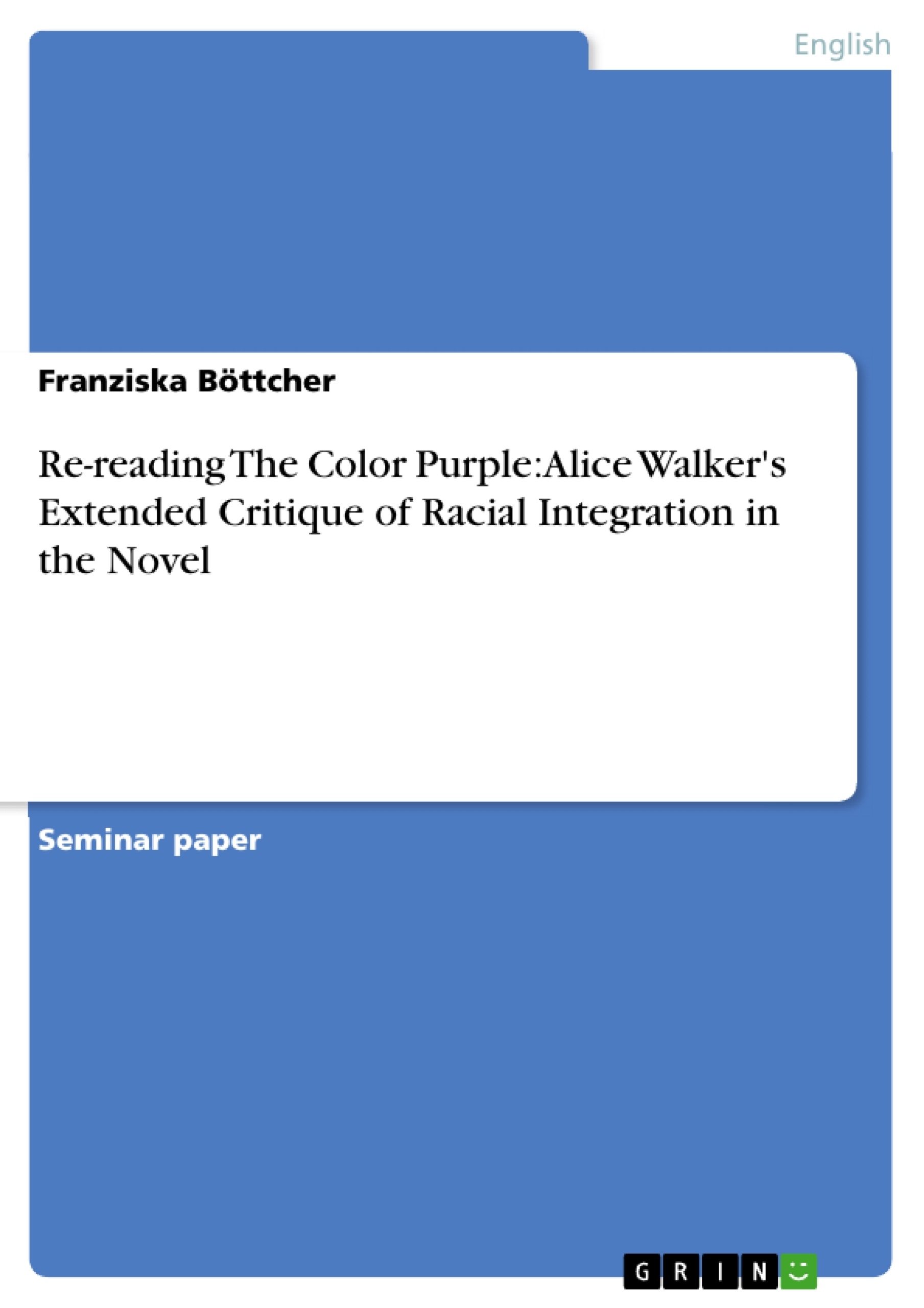The intention of this paper is to show and to analyze Walker’s often underestimated critique of racial relations in the novel The Color Purple. This analysis will be based primarily on a closer look at Nettie’s letters – the narrative’s embedded text that has been neglected by most of the early critical works on the novel.
It will be shown that one of the novel’s central questions is: Is a progress in race relations possible? And furthermore, that Walker’s answer to that question is not at all as fairy-tale-like as many critics have claimed the ending of the novel to be.
The main sources for my line of argumentation will be, of course, the novel The Color Purple 1 itself, Alice Walker’s essay collection In Search Of Our Mothers’ Gardens, and Linda Selzer’s essay Race and Domesticity in The Color Purple.
Table of Contents
- Introduction
- Alice Walker's Concept of African American Writing
- The Role of Nettie's Letters for the Critique of Racial Integration
- Nettie's First African Experiences in Monrovia
- The Domestic Ideal of Racial Integration – The Construction of Kinship
- The Olinka Adam-Myth
- The White Missionary Doris Baines
- Sofia and Miss Eleanor Jane – The Black Mammy Plantation Stereotype
- Squeak and the Problem of White Uncles
- The Critique of Missionary Work
- A Fairy-Tale Ending?
- Conclusion
Objectives and Key Themes
This paper aims to analyze Alice Walker's critique of racial relations in her novel, The Color Purple, focusing on the often neglected role of Nettie's letters. The paper explores whether progress in race relations is possible and examines Walker's response to this question, arguing that her conclusion is not as simplistic as some critics have suggested. The main sources for this analysis are the novel itself, Walker's essay collection In Search of Our Mothers' Gardens, and Linda Selzer's essay "Race and Domesticity in The Color Purple."
- The critique of racial integration in the American South
- The role of women in shaping racial dynamics
- The impact of domesticity on the representation of racial conflict
- The complexities of African American identity and community
- The limitations of the "I am black, beautiful, strong and almost always right" narrative
Chapter Summaries
The introduction establishes the context of Walker's work, highlighting the controversy surrounding The Color Purple and the criticisms leveled against Walker for her portrayal of black men and her focus on domesticity. The paper argues for a reinterpretation of the novel, focusing on the significance of Nettie's letters in understanding Walker's critique of racial integration.
The second chapter delves into Walker's concept of African American writing, contrasting her approach with the dominant trends of the time. Walker criticized the tendency to focus on white antagonists and to oversimplify the complexities of black life. This chapter draws on her essays to illustrate her critique of the "hate whiteys guts" and "I am black, beautiful, strong and almost always right" narratives that she believed limited the potential of African American literature.
The third chapter analyzes the role of Nettie's letters in The Color Purple, emphasizing their significance in furthering Walker's critique of racial integration. This section provides an overview of Nettie's experiences in Africa, particularly in Monrovia, highlighting the complexities and nuances of her journey.
The fourth chapter examines the novel's exploration of the domestic ideal of racial integration, focusing on the construction of kinship within the narrative. It explores various figures and relationships, including the Olinka Adam-myth, the white missionary Doris Baines, the portrayal of Sofia and Miss Eleanor Jane, and the problematic figure of the "white uncle." This chapter examines how these elements contribute to Walker's critique of integration.
The fifth chapter delves into Walker's critique of missionary work, highlighting the implications of this critique for understanding the complexities of race relations in the American South. This chapter further explores the limitations of the integrationist ideal as presented within the novel.
Keywords
Key themes and concepts explored in this work include: racial integration, African-American literature, domesticity, sexism, racism, black identity, female empowerment, missionary work, epistolary novel, and Alice Walker's critique of African American writing.
- Citar trabajo
- Franziska Böttcher (Autor), 2003, Re-reading The Color Purple: Alice Walker's Extended Critique of Racial Integration in the Novel, Múnich, GRIN Verlag, https://www.grin.com/document/73977



